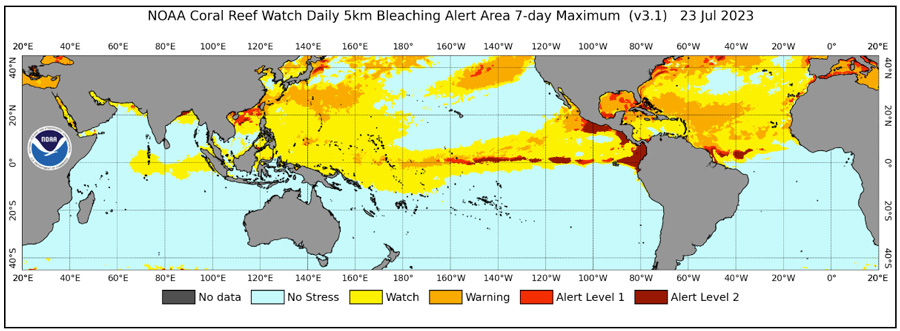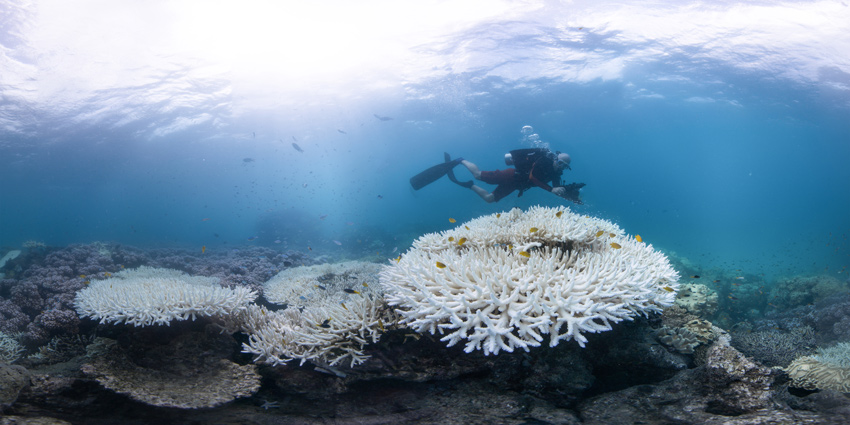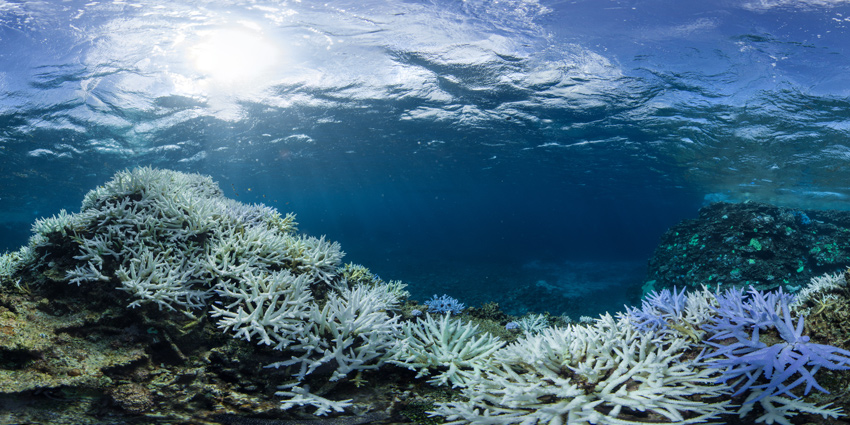Photo: Ocean Image Bank
Coral Restoration Consortium guidance to practitioners on bleaching.
Bleaching is reaching severe levels throughout the tropics with more reports coming in daily. This extreme heat stress due to the predicted El Niño, is arriving a month earlier than expected. Corals can recover from mild or short-term bleaching but long-term or extreme heat causes mortality. Restored reefs can be at the same or higher risk of bleaching than unrestored reefs, if they have a lower diversity of coral species or lower diversity of genotypes of the same species. Bleaching poses the single biggest existential threat to coral reefs throughout the world. Years worth of work could disappear in the matter of days or weeks. This document explains (1) what you can do now to minimise damage and (2) how to identify resilient corals for future restoration efforts.

1. What you can do now to minimise damage locally. Local conditions and regulations always take precedence, please check with your local regulator.
If the heat wave or bleaching has arrived in your region, CRC suggests the following actions:
Cease restoration activities and pivot to Protect, Rescue, Monitor mode..

Photo Credit: Ocean Image Bank / The Ocean Agency_Bleaching
2. Resilient Coral Identification Protocol. The following are CRC’s recommendations on how to identify resilient corals for future restoration. The more you can do the better.
Basic:
- If possible, install temperature loggers (e.g. this one). click here).
- Select bleached and unbleached corals to tag. We recommend a minimum two tagged corals of each key taxon per one square meter on a given reef of interest.
- Photograph tagged corals, preferably with a bleaching color chart in the frame of the photo. If you do not have an underwater camera, record percent of colony bleached (1-25%, 25-50% 50-75%, 75-100%); disease type and presence, % mortality (see above).
- Photograph or record information daily if possible and bleaching is severe. Monitor twice a week if bleaching is mild or predicted within a month.
- Keep records of the tag #, GPS location, species, and condition of the tagged coral.

Photo Credit: Ocean Image Bank / The Ocean Agency_Bleaching
Por favor, si necesitas comunicar preguntas, solicitudes, informes o reportes, por favor escribe a info@crc.world.
Bibliographic Source:
Published by:
Coral Restoration Consortium (CRC)
Date:
July 27, 2023



